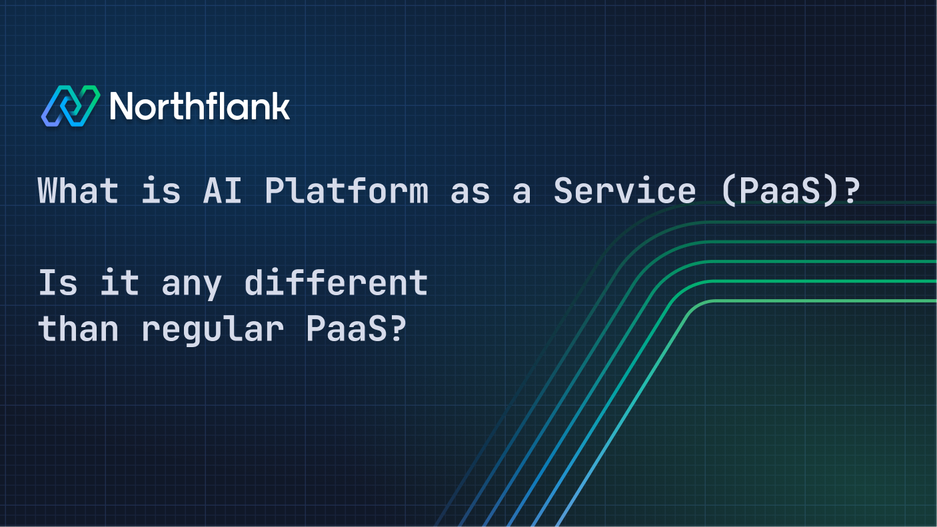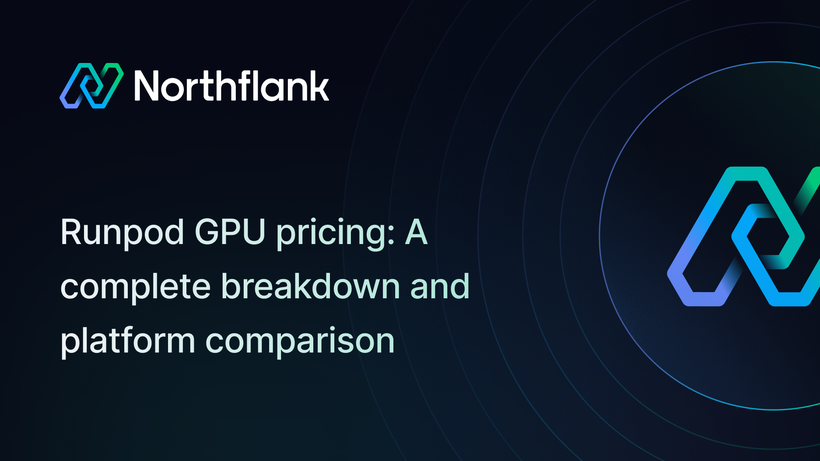

What is AI Platform as a Service (PaaS) and is it any different than PaaS?
AI workloads are everywhere: fine-tuning LLMs, serving embedding models, running inference pipelines. Whether you're building a SaaS feature with OpenAI or deploying custom models on GPUs, at some point you’ll ask: how do we actually run this in production?
That’s where AI Platform as a Service (AI PaaS) comes in.
- AI PaaS is a cloud platform that lets you build, deploy, and scale AI workloads (like LLMs and fine-tuning jobs) without managing infrastructure.
- Good platforms handle GPU autoscaling, job scheduling, observability, and secure runtimes out of the box.
- Common use cases:
- Serving open-source models (e.g. Mistral, LLaMA)
- Fine-tuning with PyTorch on your own cloud
- Running RAG pipelines with vector databases, inclduing pgvector on PostgresSQL
- Scheduling batch jobs like transcription or embedding
- Platforms like Northflank support all of the above, and your other workloads too (APIs, Cron jobs, databases).
- You don’t need a separate stack for AI. You need a platform that treats AI like any other workload.
AI PaaS refers to a category of cloud services that make it easier to build, deploy, and scale AI applications without managing infrastructure directly.
You get:
- Access to compute (especially GPU)
- Model hosting or inference endpoints
- Built-in integrations for data pipelines, vector stores, or queues
- Monitoring and autoscaling
- APIs and SDKs to simplify deployment
Some AI PaaS platforms are highly opinionated, designed for a narrow use case (e.g. image generation, chatbot inference). Others are more general-purpose and handle any containerized workload, including AI.
Northflank is one example of a platform that supports containerized AI workloads out of the box, including model APIs, batch jobs, and GPU-backed services. You can deploy directly from Git, scale workloads automatically, and access a clean UI, API, and CLI to manage everything in production.
Weights is a GenAI company serving millions of users.
Their two-person engineering team runs everything on Northflank: GPU inference, API services, background queues, and CI/CD, without maintaining their own Kubernetes setup or DevOps tooling.
Running AI in production is harder than running a demo notebook. You need infrastructure that handles:
- Scalability: AI workloads spike and dip. You don’t want to overpay or get throttled.
- Observability: You’ll need metrics, logs, and alerts, especially when model performance degrades or latency increases.
- Resilience: Inference endpoints need redundancy, health checks, and fast recovery.
- Security: Workloads often deal with sensitive user data or proprietary models. You need isolation, role-based access, and private networking (not unlike how VPNs are used to protect data in transit—what is VPN used for?). A secure runtime matters if you’re running untrusted code, customer-submitted logic, or fine-tuning third-party models, you want strict container isolation, scoped permissions, and no lateral access.
- Multi-tenancy and lifecycle management: One-off experiments are easy. Managing dozens of models across teams is not.
Instead of building all of this from scratch with Kubernetes, CI/CD pipelines, Terraform scripts, and GPU autoscalers, many teams reach for an AI PaaS to get going faster.
There are two main types of AI PaaS offerings:
These focus on one thing:
- GPU inference
- Fine-tuning specific foundation models
- Retrieval-augmented generation pipelines (RAG)
Examples: Baseten, Fireworks, Modal
✅ Pros
- Faster time to deploy for specific LLM workloads
- Abstract away most ops
- Good for teams building fast experiments or MVPs
❌ Cons
- Limited to specific models or runtimes
- Hard to customize
- May not scale with your product needs
These platforms offer broad workload support, services, jobs, CI/CD, databases, with GPU as one of many supported runtime environments.
This is where platforms like Northflank fits in.
Unlike many vertical AI tools, Northflank doesn’t assume you’re only running ML workloads. It supports everything from microservices to CRON jobs to database services, alongside AI, and integrates with your existing Git repos, Docker images, and secrets.
You can deploy:
- AI inference services on GPU
- Background jobs for batch processing or fine-tuning
- Vector databases and message queues
- Full production apps alongside your AI workloads
Northflank supports:
- BYOC (bring your own cloud) for AWS, GCP, Azure, or OCI
- Autoscaling and high availability out of the box
- Secure, VPC-native deployments
- Unified observability (logs, metrics, alerts)
- Fully managed CI/CD pipelines
AI workloads aren’t fundamentally different from other backend workloads. They need CI, they need deployments, they need to scale, and they need to be observable.
You don’t need a separate stack to run AI. You need a stack that supports AI and everything else your team is building.
AI PaaS platforms are useful any time you're trying to move an AI system from prototype to production. Some typical use cases:
Deploy a containerized service that wraps an open-source or proprietary model (like LLaMA or Mistral). Serve responses via a REST or gRPC endpoint, with autoscaling based on usage.
Run a job to fine-tune foundation models on domain-specific data. You might spin up a GPU workload for a few hours, then shut it down. You need job scheduling, GPU runtime, storage access, and logs.
💭 Northflank supports on-demand GPU jobs, which you can run with a single command or trigger from CI. It’s a practical setup for tasks like PyTorch model fine-tuning, where jobs might run for minutes or hours and need access to persistent volumes or cloud buckets.
Read more about how you can deploy AI / ML models in production →
Use AI PaaS to run scheduled or event-triggered jobs—e.g. transcribing audio files, labeling images, embedding documents. These jobs can be queue-based and benefit from autoscaling and retries.
Deploy a service that combines LLM inference with vector similarity search. AI PaaS helps you run the LLM component, the embedding generator, the vector store (like Qdrant or Weaviate), and the logic connecting them.
Some teams use AI PaaS to host multi-service apps, e.g. a backend for uploading video, a job that extracts frames, a model that generates captions, and a UI that displays results. AI is part of the stack, not the whole stack.
Ask yourself:
- Do you need full control over your environment?
- Are your workloads long-running, bursty, or latency-sensitive?
- Are you fine-tuning or doing inference only?
- Do you already have cloud infra, or are you starting fresh?
- Will your team be deploying more than just AI services?
If you're only deploying one model to test something, a vertical AI PaaS might be fine.
If you're building a product or platform, you need something broader and stronger.
The best AI PaaS is often not a dedicated one.
It’s a modern PaaS that treats AI as a first-class citizen alongside every other workload you run. That’s what makes platforms like Northflank valuable: they let you run LLM inference, manage your backend services, deploy your frontend, and handle batch jobs, all in one system.
If you're evaluating how to take your AI workloads to production, start with that lens.
Don’t ask “Which AI PaaS should I use?” Ask: what’s the best platform to run everything, including AI?
Northflank allows you to deploy clusters, code, and databases within minutes. Sign up for a Northflank account and create a free project to get started.
- Create and manage clusters in your AWS, GCP, and Azure accounts
- Deploy Docker containers
- Create your own stateful workloads
- Backup, restore and fork databases
- Observe & monitor with real-time metrics & logs
- Low latency and high performance


